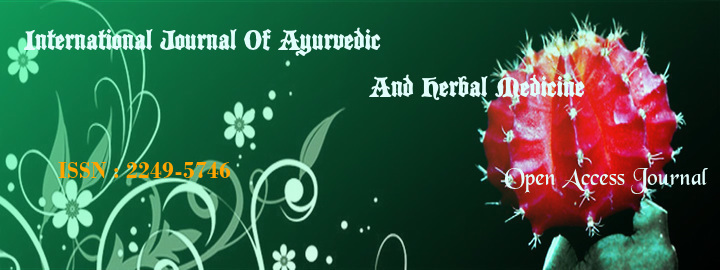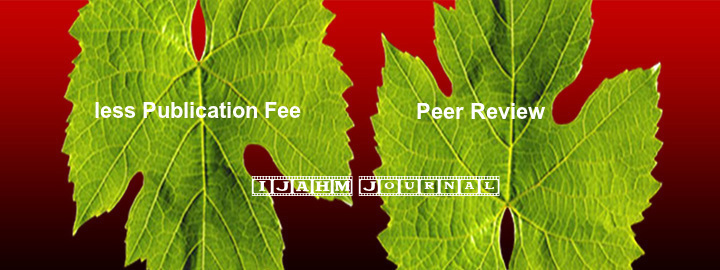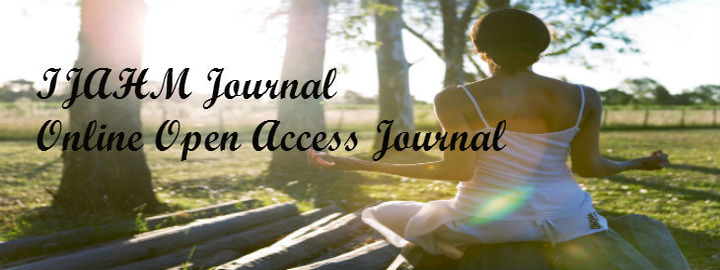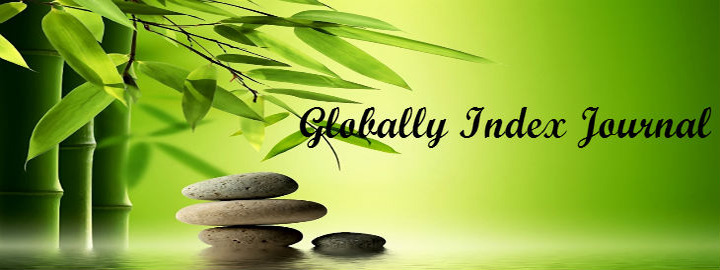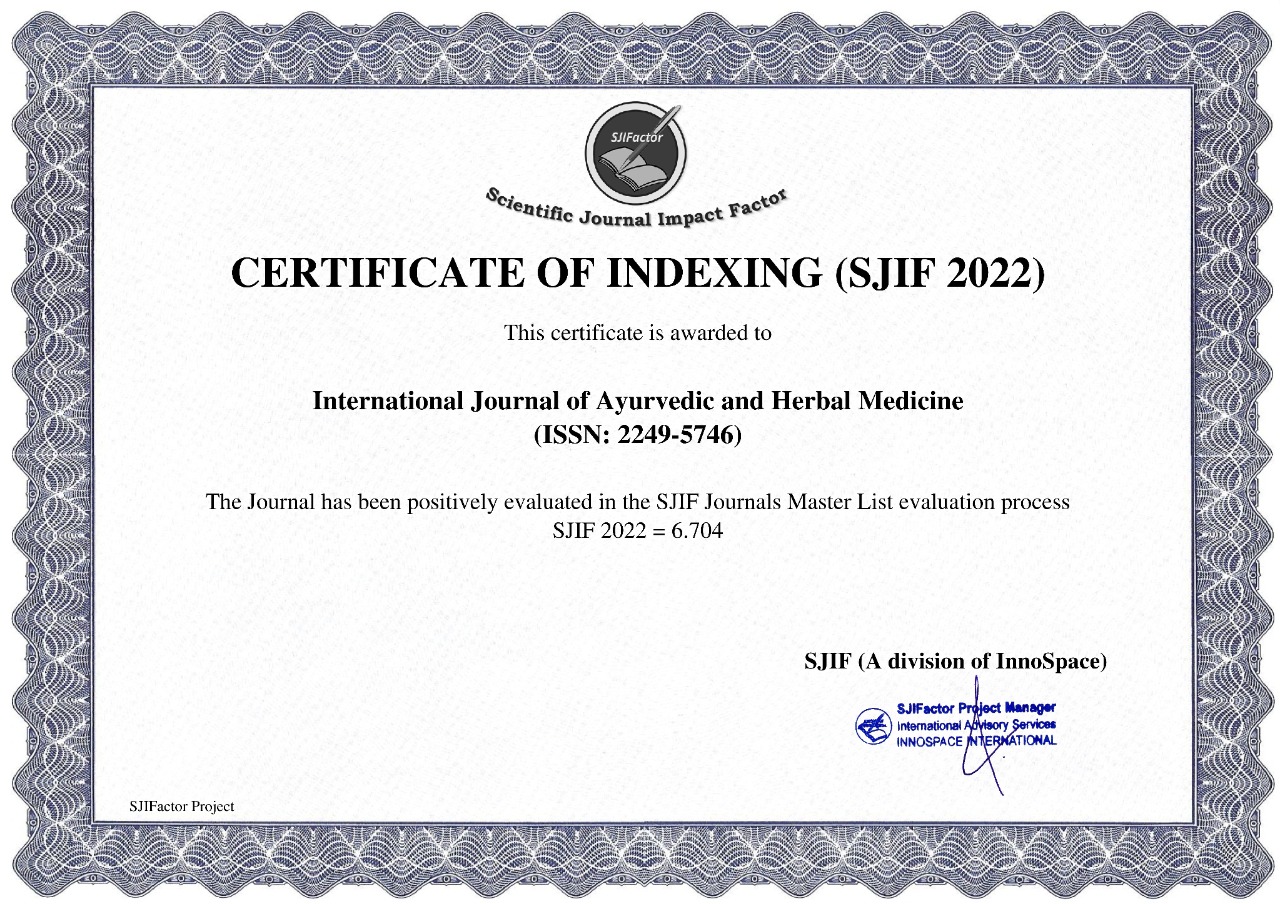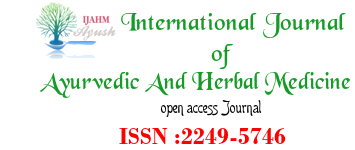


Dr. Manoj Kumar1, Prof. Sangeeta Gehlot2
DOI : http://dx.doi.org/10.31142/ijahm/v10i4.02
1Lecturer, Dept. of Kriya Sharir, Lalit Hari P.G. State Ayurvedic College and Hospital Pilibhit, U.P, India
2Professor and Head, Dept. of Kriya Sharir, Faculty of Ayurveda, Institute of Medical Sciences, Banaras Hindu University, Varanasi, India
*Corresponding Author- Dr. Manoj Kumar
- Lecturer, Dept. of KriyaSharir, LalitHari P.G. State Ayurvedic College and Hospital Pilibhit, U.P. India
ABSTRACT
‘Ayurveda is the ancient science of life, based on some of the oldest classics, and these are overfilled with various medicinal herbs. Tephrosia purpurea (Sarapunkha)i s one of the important drug in Ayurvedic system of medicine. It is an extremely variable species, usually divided into number of subspecies. Tephrosia purpurea (Sarapunkha) is a species of flowering plant in the pea family, it has played an important role in traditional and folk medicine as well. It helps in the production of blood cells ,so the herb also manage the symptoms like anaemia, fatigue bleeding associated with hepatomegaly and splenomegaly. The objective of present study was to find out the action of Tephrosia purpurea (Sarapunkha) on cardio vascular system and to review the various references of Tephrosia purpurea (Sarapunkha)which are mentioned in our ancient texts. Healthy adult male and female subjects having age between 25 to 35years were selected for the study. The ECG tracings were recorded along with the measurement of blood pressure, pulse and respiratory rate before and after the ingestion of Tephrosia purpurea (Sarapunkha) root powder decoction(100 mg/kg body weight) twice a day for 7days.The study on human volunteer shows that after taking root powder decoction of Tephrosia purpurea (Sarapunkha), the heart rate was observed to decrease and it was associated with a decrease in systolic blood pressure of the individual with little change in diastolic pressure. The action of the ingredients of Tephrosia purpurea (Sarapunkha) could be local on the cardiac muscle or the pace maker, so as to cause reduction in the heart rate .However the action of the drug on cardio- vascular system might be through the alteration in the activity of the autonomic nervous system.
Reference:
- Srivastava Niraj et.al.Fundamental Nature of Medical Ethics in Kaumarbhritya ( Paediatrics of Ayurveda),JETIR,Vol.6,page 823.
- Pankti P Dalwadi et al, Tephrosiapurpurea Linn (Sharpunkha, Wild Indigo): A Review on Phytochemistry and Pharmacological Studies, Indian Journal of Pharmaceutical and Biological Research (IJPBR)
- Rigveda, (10/14/14), (10/67/03), (10/163/03)
- Atharvaveda, (10/02/11),(10/02/27),(10/57/70),(18/8/43)
- Samveda, (6/4/3)
- Satpath Brahman, (4/1/5/12), (8/5/4/3), (8/5/4/6)
- Kathopnishad ,(2/2/4), (2/3/1)
- Chandogya Upnishad,(8/1/1), (2/33/3), (3/14/3)
- Mahabharat Shantiparva (185/3),(185/15)
- Padmapuran (22-23)
- Charaka samhita , English translation by Sharma RK, Dash B. Vol-I, SutraSthan (30/2-3), Chaukhambha Sanskrit series office, Varanasi. (2010)
- Charaka samhita , English translation by Sharma RK, Dash B. Vol-I, SutraSthan (30/4-6), Chaukhambha Sanskrit series office, Varanasi. (2010)
- Sushruta samhita, English translation by Sharma P.V, Vol II, Sharirasthan(4/31), Chaukhambha Vishvabharati , Varanasi. (2005).
- Sushruta samhita, English translation by Sharma P.V, Vol II, Sharirasthan(4/33), Chaukhambha Vishvabharati , Varanasi. (2005).
- Brahmopnisha
- Vagbhata .Astanga Hriday , English translation by Srikantha Murty KR, Vol-II, Sharir- sthana (3/13) Chaukhambha, Krishnadas Academy Varanasi. (2015)
- .BhelSamhita,Sutra-Sthan 21. Chaukhambha Sanskrit series office, Varanasi.
- ,Human Physiology in Ayurveda,First Edition,2005
- Orwa C, Mutua A, Kindt R, Jamnadas R, Simons A, Agroforestree database: a tree reference and selection guide version, 2009,27,52-59. 4
- Bhawprakash Nighantu
- Medicinal and Aromatic Plants Abstracts, CSIR, Volume 24, No. 1, 2001, p. 308
- Purushottam Kaushik and Anil Kumar Dhiman, Medicinal Plant and raw drug of India.page 197,1999.
- Prajapati Mahendra P.,Effect of Albizzia lebbeck on Hunger and Gastrointestinsl Tract Function,2004,IMS,BHU,Varanasi.
- Dastur J.F., Everybody guide of Ayurvedic Medicine.
index







